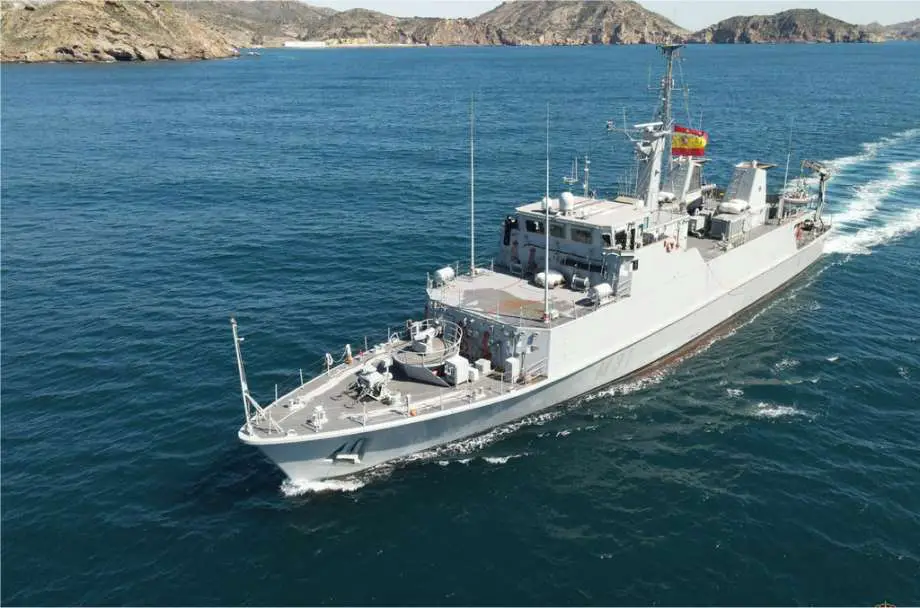Breaking news
Spanish Navy to modernize fleet of 6 Segura class minehunters.
According to information published by Infodefensa on October 6, 2023, the Spanish Navy is set to invest over €135 million to upgrade its fleet of six Segura-class minesweepers, owing to the outdated technology onboard these vessels, ranging between 30 to 40 years old.
Follow Navy Recognition on Google News at this link
 Spanish Navy's Segura class minehunter Segura. (Picture source: Spanish MoD)
Spanish Navy's Segura class minehunter Segura. (Picture source: Spanish MoD)
The Segura class comprises a series of ships designed for combating sea mines, built for the Spanish Navy in the late 1990s and early 2000s. These ships were named after Spanish rivers, with the first minesweeper, the M-31 Segura, giving its name to this class of vessels.
The development of this class was part of the High Seas Plan to replace the 8 coastal minesweepers that existed in 1990. Although the plan initially considered the construction of 12 ships, including oceanic minesweepers and coastal minesweepers, the former were later abandoned. Four minesweepers were built in an initial order, followed by the M-35 and M-36, with an option for two more.
The company Izar (later Navantia) adapted the British Sandown class to meet Spanish requirements, which included the ability to detect anchored mines up to 300 meters deep and bottom mines up to 200 meters.
Their design and construction were tailored to counter the primary systems that activate mines, especially magnetic and noise triggers, but also pressure and contact.
To achieve this, the ships were made of fiber and coated with GRP. The outer layer was further covered with vinyl and polyester. As an additional measure, the electric motors were designed to produce minimal magnetic fields and counterbalance each other.
The diesel generator engines power two silent electric motors, and these minesweepers use Voith Schneider propellers instead of the usual naval propellers, providing remarkable maneuverability.
Each ship also carries two outboard boats equipped with silent engines. To avoid approaching or touching mines, these ships are highly maneuverable, and for tight turns, they have two electric thrusters at the bow that, combined with the Voith Schneider propellers at the stern, allow them to turn in a very tight space.
They have diving gear and a Gayrobot Pluto Plus anti-mine submersible (used to locate and destroy mines up to 300 meters deep). They later incorporated the Kongsberg Minesniper, a type of remote-controlled underwater torpedo capable of destroying mines up to 4000 meters away.
They also have a sonar to detect mines up to 300 meters deep, which can be used at keel level or submerged, and are equipped with two cranes and a hyperbaric chamber in case of decompression accidents.


























